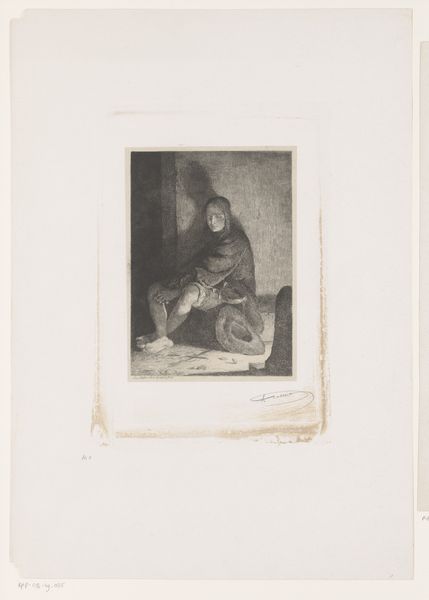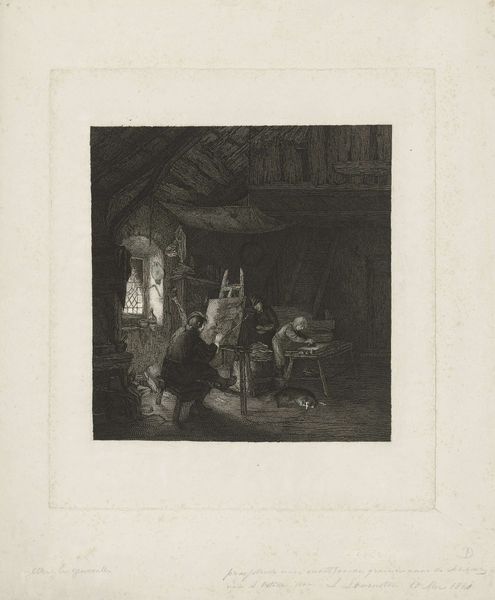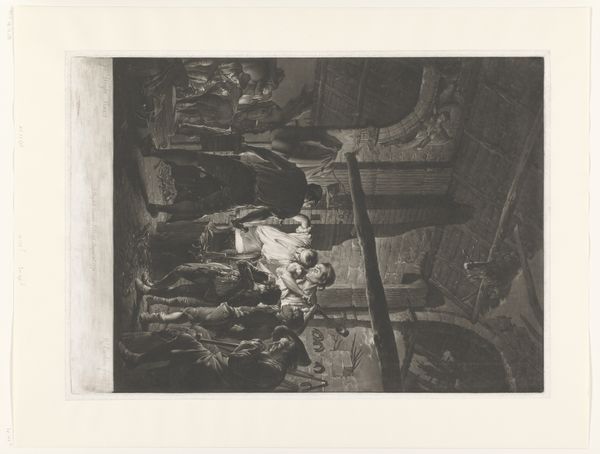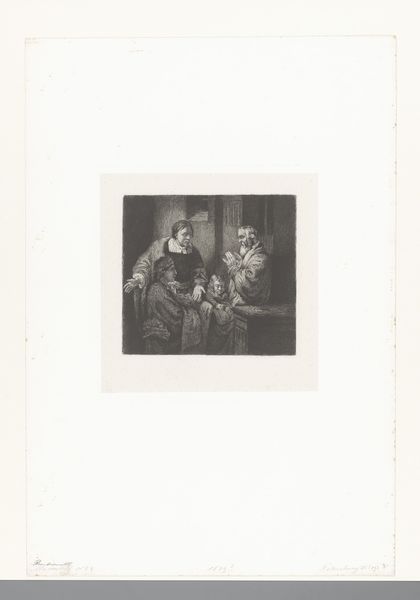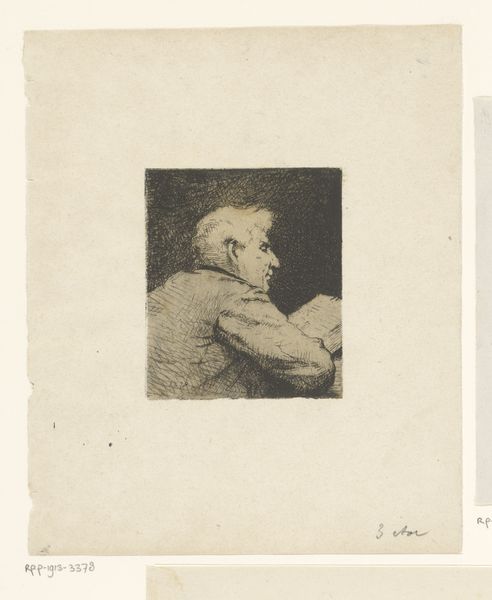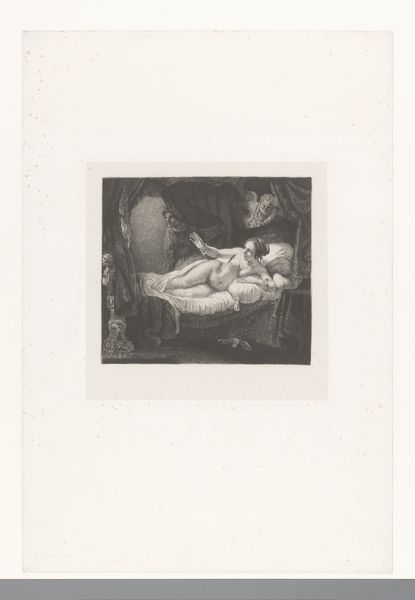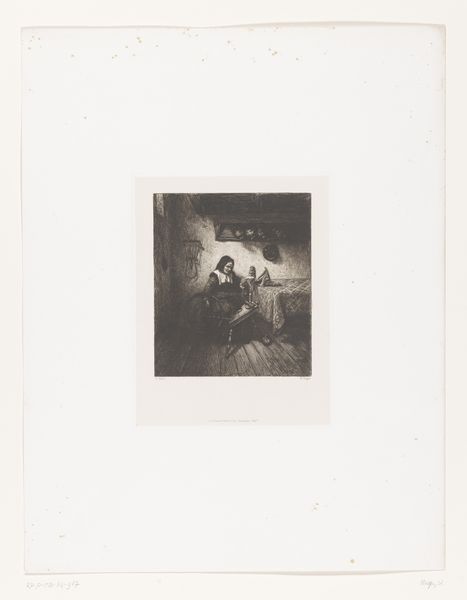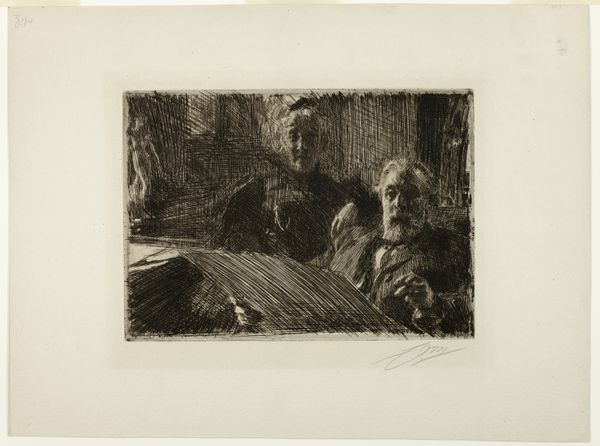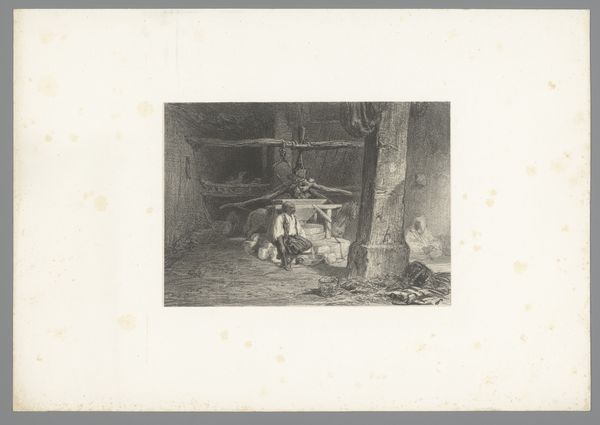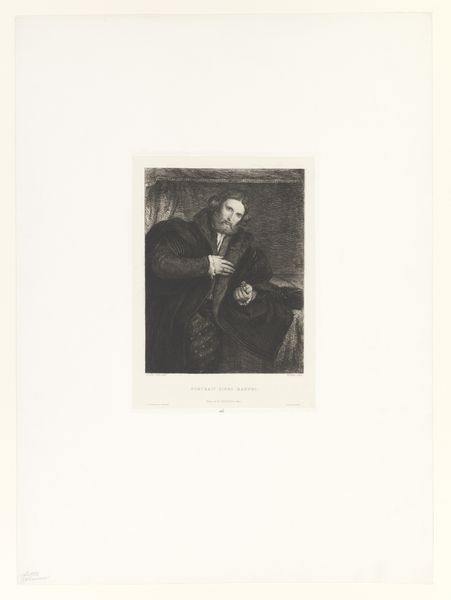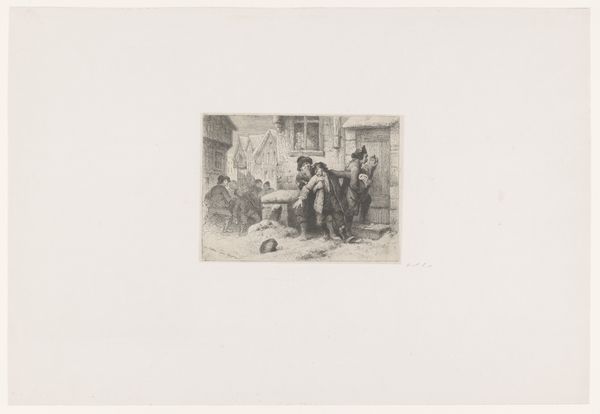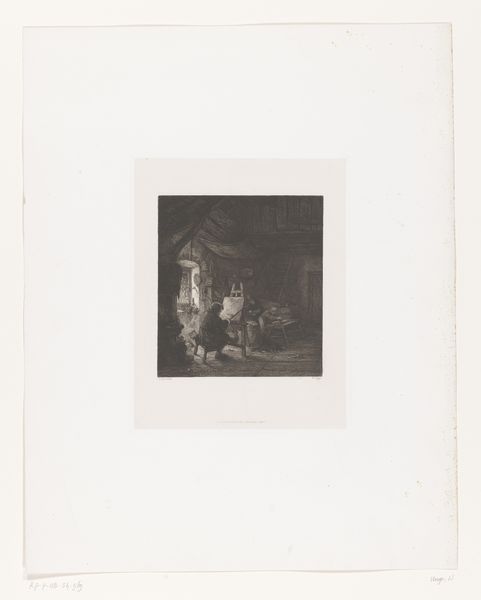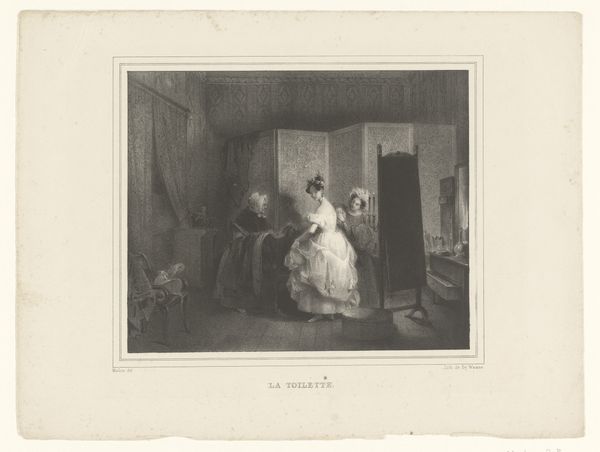
lithograph, print
#
portrait
#
narrative-art
#
lithograph
# print
#
german-expressionism
#
figuration
#
social-realism
#
expressionism
#
history-painting
Dimensions: 423 mm (height) x 329 mm (width) (bladmaal), 239 mm (height) x 201 mm (width) (billedmaal)
Editor: We're looking at Käthe Kollwitz's 1897-98 lithograph, "A Weaver's Revolt: Death", currently residing at the SMK. The heavy shadows and cramped composition give it a really claustrophobic, despairing feel. What do you see in this piece? Curator: It's impossible to separate this work from its materiality and the context of its production. Kollwitz chose lithography precisely because of its potential for mass production. How does making such emotionally fraught works accessible on a wider scale influence its meaning, do you think? Editor: I guess it makes it less of an elite art object and more of a statement, a tool for social commentary almost. Curator: Precisely. The very act of creating this series using printmaking is a political one. It underscores the accessibility and potential for dissemination of the weaver's plight, making visible the otherwise invisible exploitation of labor. The process and materials are inextricably linked to the message. Editor: That makes me consider the choices she made – why this particular scene, why lithography specifically? Curator: Look closely at the figures. Consider their physical presence, the visible signs of labor etched into their bodies. Kollwitz highlights the material impact of industrial production on the human form, transforming individual bodies into sites of social and economic struggle. The cheap reproduction amplifies the tragedy of it all. Editor: So it's not just about the image itself, but how that image was made and who it's intended to reach. Curator: Absolutely. It makes us rethink traditional notions of artistry, moving beyond mere aesthetic appreciation and engaging with the brutal realities of labor and the power of accessible media in expressing social movements. Editor: I never thought about printmaking as an inherently political act before! I'll definitely look at lithographs differently from now on. Curator: Precisely, understanding material history is key.
Comments
No comments
Be the first to comment and join the conversation on the ultimate creative platform.
